Edukasyon Online Academy Learning Hub
Site blog
What is netiquette?
Netiquette is a made-up word from the words net and etiquette. Netiquette thus describes the rules of conduct for respectful and appropriate communication on the internet.
Netiquette is often referred to as etiquette for the internet. These are not legally binding rules, but recommended rules of etiquette. Netiquette is mostly used for dealing with unknown people on the internet. The rules of netiquette very depending on the platform and its participants . Generally, it is up to the operator of a website or communication app to specify the type and scope of netiquette. It is also their responsibility to monitor compliance with these basic rules and to penalize violations of them.
Netiquette: General rules of conduct
When communicating on the internet, you should always remember that you are communicating with people and not simply with computers or smartphones. As in the real world, rules of etiquette are necessary on the internet. Netiquette is therefore important to avoid adverse consequences.
Below you will find 20 general recommendations for conduct on the internet that you should follow when communicating online.
1. Stick to the rules of conduct online that you follow in real life
When communicating online, remember the rules of etiquette that you follow in your everyday life. Refrain from insulting, provoking, threatening or insulting others. Respect the opinions of your chat counterparts and express constructive criticism. Remember that you can be prosecuted for insulting people online.
2. Netiquette: Think of the person
Think of the person behind the computer when you compose your messages. You are not communicating with a machine, but with real people. Also, consider what and how you write. Because the internet doesn't forget anything! A screenshot or a copy of your messages is quickly made and still exists even if you delete your messages afterward.
3. Present your best side online
Communication on the internet comes with a certain anonymity that does not exist in real life when you are talking to someone face to face. Often this anonymity leads to a lower inhibition threshold for many users and they behave rudely online if, for example, you disagree with them.
Make sure that you show your best side online. Remain friendly and respectful, even if you disagree. Good netiquette is characterized by respect, politeness and professionalism.
A tip: You should generally refrain from writing messages or individual words entirely in capital letters – even if you want to give these sections more expression. After all, capital letters on the internet mean shouting and are generally considered impolite.
4. Read first, then ask
Do you have a question about something? Then take the time to carefully read the answers in the previous discussion posts first. There is a good chance that someone has already answered your question. If you write an answer similar to someone else's, it shows the other chat participants that you have paid little attention to the conversation so far.
Remember that conversations online can happen very quickly. It is therefore important to gather all the information before responding or asking questions.
5. Netiquette: Pay attention to grammar and punctuation
Take time to read through your answers again. Check them for grammar, punctuation and correct spelling. It can be very frustrating for the other person if they have to decipher poorly written sentences in order grasp the meaning behind them. In addition, faulty grammar distracts from the goal of your message.
Grammar, spelling and punctuation become especially important when composing emails or other correspondence that you submit to colleagues or superiors. If you have a weakness in grammar and spelling, don't be discouraged. Use spelling aids before you send messages.
Another tip: When composing emails, always remember to use the appropriate salutation and parting formula as well. These are also part of netiquette.
6. Respect the privacy of others
This rule should be followed not only in everyday use of online communication, but also at work. Do not simply forward information that has been sent to you without first obtaining permission from the original sender. When sending private emails to multiple recipients, use BCC (blind carbon copy) instead of CC (carbon copy). Many people do not like their names and email addresses being passed on to people they do not know themselves.
This rule on the internet also applies to uploading and sharing photos or videos that show other people. Before circulating such private files, be sure to check with the people concerned before doing so.
Last but not least: Respect the privacy of others and do not sign up for newsletters, forums or the like with someone else's name or email address.
7. Respect the time and bandwidth of others
We live in a much faster world than our parents or grandparents are used to. Information can be sent to different people around the world in a matter of seconds – and without much effort. Nevertheless, the bandwidth, that is to say the information capacity of wires and channels, is limited. It is similar with humans. Think of this limited receptivity of information when you send messages to your friends, colleagues or superiors.
Do you get to the point quickly enough in your emails? Are your arguments formulated correctly and clearly recognizable? No one wants to waste time unnecessarily on an email whose core message is only at the end of the email. That consumes time and effort, and is simply annoying. Also, consider who really needs to be on the list of recipients. After all, respect for other people's time and bandwidth is also part of netiquette.
8. Forgive the mistakes of others
Everyone who goes online to forums and networks was once a beginner. As in any other field, you can make mistakes as a beginner. In online communication, these can be a lack of etiquette or manners.
Often these are spelling mistakes, superfluous questions or answers that are too long. With this in mind, it's important to forgive your counterparts' mistakes. If they are only minor mistakes, it is best not to react to them at all. In the event of a major error, for example a wrong quote, messages written only in capital letters or missing grammar and punctuation, then it is best to point it out to the person in a private message.
A tip: Sarcasm in written form is not always recognizable to everyone on the internet. It is therefore better to remain objective. If you still want to express sarcasm among friends or close colleagues, use emojis such as smileys or GIFs. Carefully chosen, emojis can reinforce your message.
9. Netiquette: Don't abuse your power
On the internet, as in real life, some people have more power than others. Moderators in a forum, experts in companies or system administrators. If you have more power than others, you do not have the right to exploit this power.
Don't spy on colleagues or chat participants just because you have the technical means to do so. For example, system administrators should never read private emails or find out about the salary structure in the company.
10. Help keep flame wars under control
Flame wars are messages that contain aggressive personal criticism or attacks on a person. In group chats, heated discussions often degenerate into so-called flame wars. If you get into such a discussion, you should stay out of it. Always remember that you should treat others as you would like to be treated. Profanity is not part of netiquette.
Also remember that insults and threats on the internet can have legal consequences for you. For this reason, do not be tempted to make such comments, even in heated discussions. Instead, demonstrate exemplary conduct on the internet.
11. Know where you are in cyberspace
Netiquette is interpreted differently in different places on the internet. For example, it is perfectly normal to spread gossip in a TV discussion group. However, if you do this in a serious discussion group, you will quickly make yourself unpopular. It is therefore important that you know where you are on the internet.
This also means that if you are in a new area that is unfamiliar to you, you need to look around and learn the ropes. Get an idea of how other people in this area of cyberspace communicate with each other and adapt to them.
12. Hate speech and netiquette
So-called hate speech on the internet is an increasing problem, especially in social media. It is often found in offensive comments under photos or posts. However, time and again there are coordinated actions by specific actors who join forces for the sole purpose of spreading hate comments. Not infrequently, social or religious fringe groups, foreigners or black people become victims of such actions.
What can you do against hate speech? If you come across such statements on the internet, you should report them to the provider of the website. Often you will find the option to report a post directly underneath it on social media. The providers are legally obliged to delete content which is evidently illegal within 24 hours.
In addition, you can actively approach the spreaders of hate speech and try to invalidate their statements and subsequently educate the perpetrators. It is advisable to ask for the alleged "facts" and take a clear position against hate. Steer the discussion in a more positive direction. However, under no circumstances should you react with hate or insults. You could also be held accountable for this.

Netiquette: Safety rules for children
The internet is an enrichment for everyone – in everyday life, at school and at work. However, it brings with it some risks and downsides, such as the dark net. Talk to your child and explain the possible risks of the internet. Respect your child's privacy and explain the following rules for children on the internet:
13. Children on the internet: Do not give out personal information
In these times of social media, identity theft and social engineering, keeping personal information secret is essential! Under no circumstances should your child share passwords or personal information such as their name, address or telephone number online. The name of the school or clubs should also be kept secret.
14. Use a neutral nickname
Make sure that your child uses a neutral nickname in chat rooms. This should under no circumstances reveal your child's identity. In addition, a neutral nickname ensures that other people do not feel insulted or ridiculed.
15. Netiquette and bots/troll posts
So-called bots are computer programs that usually automatically follow up on a task without requiring any interaction with humans. In social media channels, bots often post comments or even their own posts.
They often spam in forums or in the comments under posts. This is annoying and time-consuming, as these responses have to be identified and removed. Bots are therefore not part of netiquette and should be avoided if at all possible.
16. Rules for children on the internet: Do not trust chat participants
Your child should always approach strangers with a healthy skepticism. You never know who is really hiding behind the funny profile name and picture. For example, your child should never meet a stranger just because they got along well in a chat conversation. It could be an adult with bad intentions.
Similarly, you should explain to your child that they should not add strangers as friends on social media such as Facebook or Instagram. Your child should also not simply open emails and other messages and download attachments. In doing so, your child could accidentally download a Trojan or other malware.
17. Fairness first: Do not exclude anyone
If your child is communicating in a private group, they should refrain from making insider jokes that not everyone in the group will understand. It is better to send a private message to this person. Other chat participants should not feel excluded. Netiquette includes values such as tolerance, respect and helpfulness. This also means that only the language used by everyone should be used.
In a school group chat, your child should always make sure that all chat members are on the same level, for example during a review or presentation. When your child is explaining a topic that may not be clear to everyone, it is a good idea to answer questions about the topic.
18. Netiquette for children: Keep it short and clear
Posts, answers and even questions should be kept as short and clear as possible. No one wants to read an unnecessary amount of text that does not contribute to answering the issue.
Cumbersome language and repetitions only clog up chats and forums; in addition, spelling mistakes can make it more difficult to read and understand what is being said. Forwarding chain letters also has no place in respectful online communication.
19. Netiquette and online learning (tips for pupils)
In the wake of the COVID-19 pandemic, most teaching in schools was done online. So-called homeschooling – teaching from home – was a new challenge that pupils, teachers and parents had to overcome together. Here are some tips for teaching from home:
- Children should support one another, for example by responding to classmates' questions on a chat thread.
- Instruct your children not to digitally record or take screenshots of lessons without first getting the teacher's permission.
- A polite and respectful tone is an absolute must in homeschooling.
- Passwords and credentials given by the school must not be passed on by children to third parties under any circumstances.
- Children should be ready a few minutes before class starts in order to start on time. Teaching materials should be ready and the camera for the video conference should always be switched on. You should also make sure that your child dresses as they would appear at school.
- Pupils should speak up if they have any questions or comments. Afterwards, they should mute their microphone again so as not to disturb the lesson with any background noise.
20. Trust your child
Last but not least, the most important rule for children's use of the internet: Trust your child. After all, you cannot permanently look over their shoulder, whether your child is learning via computer, smartphone or tablet. Your child learns best through their own experiences. Trust in your offspring's abilities, and refrain from constantly monitoring their internet activities. It is usually enough to know that your child can ask you for help if the worst happens.
Conclusion
If you follow the above rules of netiquette, you will have no problems with online communication in everyday life, in class or at work. In addition, your respectful and friendly behavior will be noticed positively by your colleagues and superiors.
Especially for children, it is important to learn the correct rules of etiquette on the internet at an early age. Social interaction and the correct rules of etiquette and behavior on the internet are just as important as in real life.
Every modern person notices how the Internet is rapidly developing. New technologies and innovative developments are emerging that have a huge impact on the development of not only our society but all mankind. The modern Internet has come a long and difficult way in its development to provide us with almost unlimited access to a vast amount of unique data. The Internet has evolved and, in almost 50 years, has gone from Web 1.0 to Web 3.0. Let’s examine these stages of development by studying the features of Web 1.0, Web 2.0, and Web 3.0 and talk about the future of programmatic advertising.
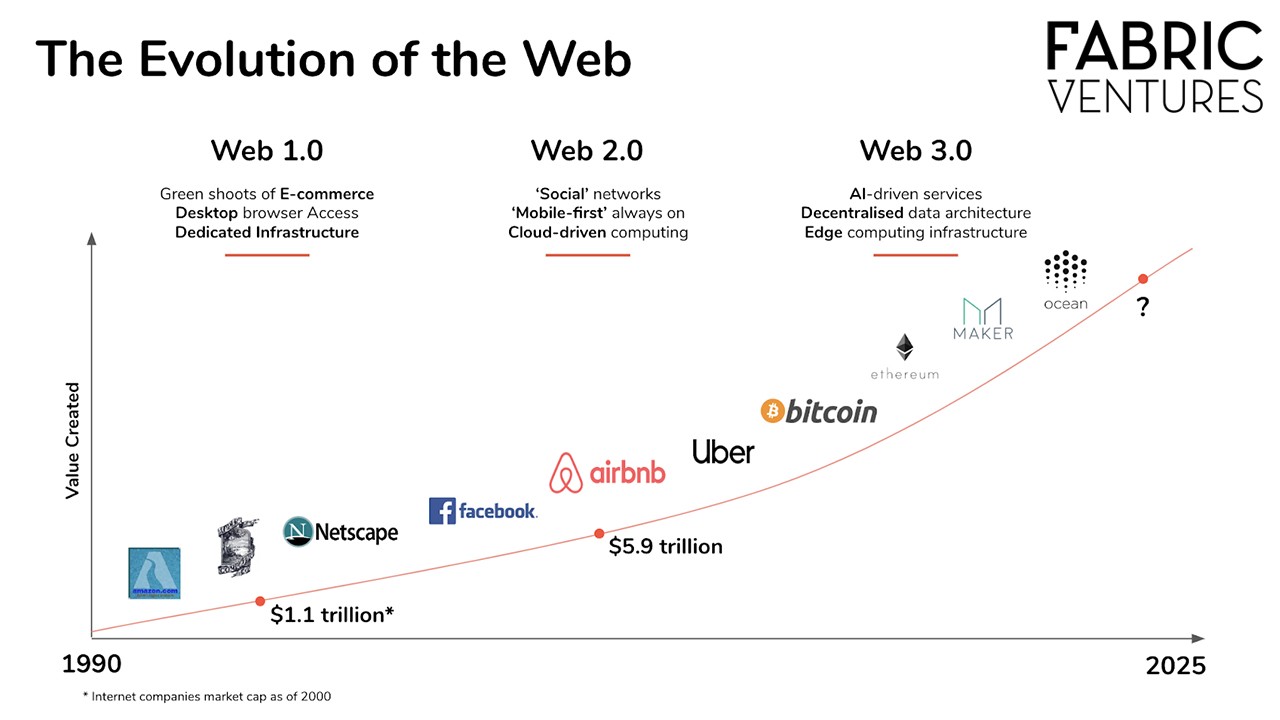
Web 1.0 [Read only]
It is noteworthy that the definition of Web 1.0 appeared after the advent of Web 2.0 because users noticed significant changes after the first “version”. This phase of the network’s iteration lasted for a relatively long period, from 1991 to 2004. At that time, users could only view pages, so this version is called Read Only. People did not yet have the opportunity to interact with Internet content or take part in its creation. In other words, users only consumed what was on the virtual pages. It is also important to note that at that time, there were no trackers, registrations, accounts, or authorizations. The design of the sites was quite primitive compared to the modern variety and interactivity. Most online platforms provided users with “raw” text, neglecting HTML markup.
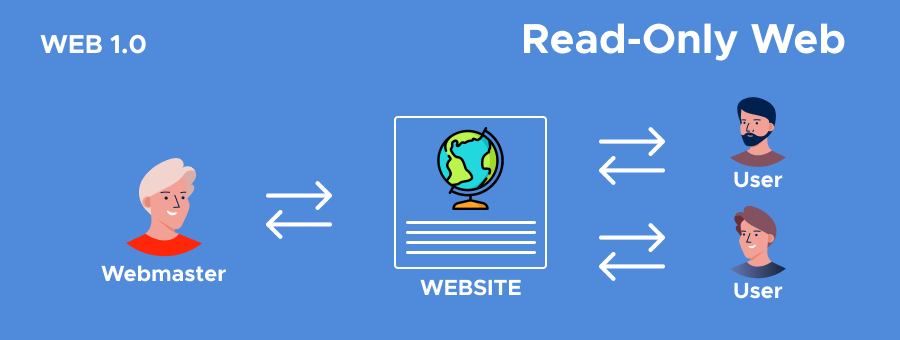
Digital advertising was not very popular; it was hyperlinked in the text, and later banners appeared. Some websites added GIF animations, bright colors, and textures to give the page some life. Toward the end of the Web 1.0 era, people saw chat rooms and forums, so they could participate in the creation of Internet content. However, even such a well-known online store as Amazon only allowed people to leave reviews from the very beginning.
Web 2.0 [Participative Web]
At this stage, the Internet had already begun to appreciate user-generated content, and the use of sites had become more convenient, with interoperability appearing. The technical features of online pages and design methods also improved. Blogs, social networks, podcasts, and RSS emerged. Web browser technologies also evolved, with AJAX and JavaScript frameworks being used. The era of GIF animation passed, and more complex animations appeared. Companies began to open their virtual portals, making them adaptive (that is, with the ability to open on both desktops and smartphones).
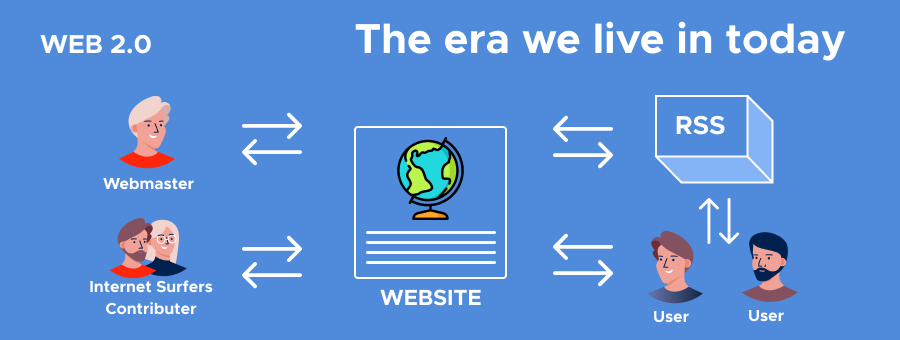
But, in addition to free access to a vast amount of information, more virtual threats appeared. Many sites began to contain advertising; these were bookmarks of the promoted site and an offer for users to add this or that page to their bookmarks. Another great advertising implementation is Q&A services. It was already something similar to the modern Web with lots of banners, videos, and other advertising formats. In the 2010s, the successful development of programmatic advertising began, which helped to promote thousands of large and small companies. However, the further development of technology and the advertising industry has resulted in negative effects on ordinary web users. Digital corporations have begun to track huge amounts of data about people and aggressively use it for advertising purposes. This has outraged a vast number of people who would like to see the Internet more open, decentralized, and private.
Web 2.0 started in 2004 and is still ongoing. We are now living in a period of transition to Web 3.0, which promises to turn the above values into reality
Web 3.0 [Read-Write-Execute]
This version is considered the future of the Internet because it has created a space with decentralized platforms. This era includes a more intelligent and autonomous Internet where all data is connected conceptually. Users will be able to interact in a more decentralized way but with greater security. Protecting money, information, payments, and personal data is an advantageous condition for companies, ordinary users, big corporations, and banks.
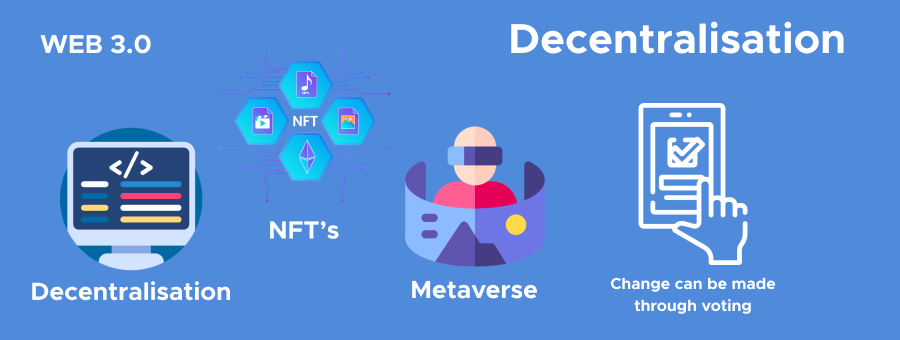
To better understand the picture, let’s define the main characteristics of Web 3.0:
- Intelligent algorithms have not left the Internet; they continue to help users find the information they need.
- Almost all computing processes are transferred from data centers to various “smart” gadgets of people.
- There will be more advertising because companies are transferring the sale of their products to virtual spaces. It is possible to purchase almost anything and find any service.
The software gets open source to see how the tools work and how they interact with site visitors. - More opportunities for blockchain, crypto investors, and NFT enthusiasts. Here it is interesting to mention that from 2021 to 2022, games based on the blockchain increased by 2000%.
The new wave of Web 3.0 is an opportunity to build a global village – a universe that will be focused on people and interpersonal interaction. This will contribute to the development of not only business but also technology. The new era is a good environment for promoting private initiatives, such as start-ups. The possibilities of this generation of the Internet are impressive, but some experts say that all experiments with new implementations depend only on investment.
Web 3.0 and the Future of Programmatic Advertising
The virtual world impresses with its versatility and the possibility of implementing almost any idea. Some experts criticize the new generation of the Internet because they see an exclusive focus on money relations. But more opportunities for companies mean more sales and more profits. The era of Web 3.0 provides more possibilities not only for earning but also for education, science, history, and other areas. Many companies will become Decentralized Autonomous Organizations where vital issues are decided not by the director but by the participants of the DAO. This is more profitable for the company because the participants discuss the product, advertise it and decide what needs to be fixed or changed to make the product more popular.
Also, Web 3.0 is a real heaven for programmatic advertising because there is no real-world factor here. In this era, new technologies are developing that allow for improving advertising tools, placements, and formats. Not everything in the real world can be effective for advertising, and the metaverse will become a cutting-edge approach. For example, the development of cookieless technologies makes it possible to achieve greater anonymization. Open-source software allows you to accelerate the development of new advertising technologies. NFT and crypto leads to completely new ways to interact with the ad viewer.
Are you a digital native? Let’s find out.
Directions: Answer the following questions honestly.
1. How many times have you checked your phone this morning?
2. How many status updates have you posted in Facebook or Twitter today?
3. Did you use the Internet for an hour after you woke up this morning?
4. Do you follow a celebrity via his/her social media account?
If you happen to be “guilty as charged” in most of these questions, chances are, you are a digital native. And chances are, from the moment you were born, you were surrounded by technology. You are surrounded by ICT.
WHO IS A DIGITAL NATIVE?

Digital Native is a person born or brought up during the age of digital technology and therefore familiar with computers and the Internet from an early age.
WHAT IS DIGITAL NATIVE
As the famous saying goes, "Love makes the world go round." But you might argue how the Internet has made the world go round for decades before you start searching for someone to fall in love with. Likewise, the Internet has probably made your world go round in the motivation activity. In this lesson we will understand how information and communication technologies in such a short period of time have improved our lives.
What is Information and Communication Technology or ICT?
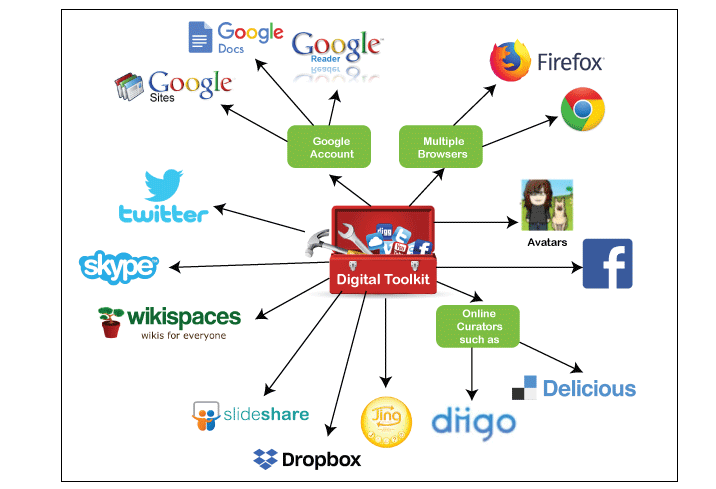
-
-
- It deals with the use of different communication technologies such as mobile phones, Internet and etc. to locate, save, send, and edit information.
-
Having a unified way to communicate is one of the goals of ICT. We spend less because of ICT.
World Wide Web
- The World Wide Web, commonly referred to as WWW, W3, or simply the Web is an interconnected system of public webpages accessible through the Internet. It was invented Sir Tim Berners-Lee in 1989.
- Web pages are what make up the world wide web and it can either be static or dynamic.
Web 1.0


- Web pages are static and not interactive. You can’t post comments or create an account.
Examples of Websites in Web 1.0 - Web 3.0

Web 2.0

- term used to describe the present generation of the World Wide Web that concentrates on its capability of providing people the means to collaborate and share information online
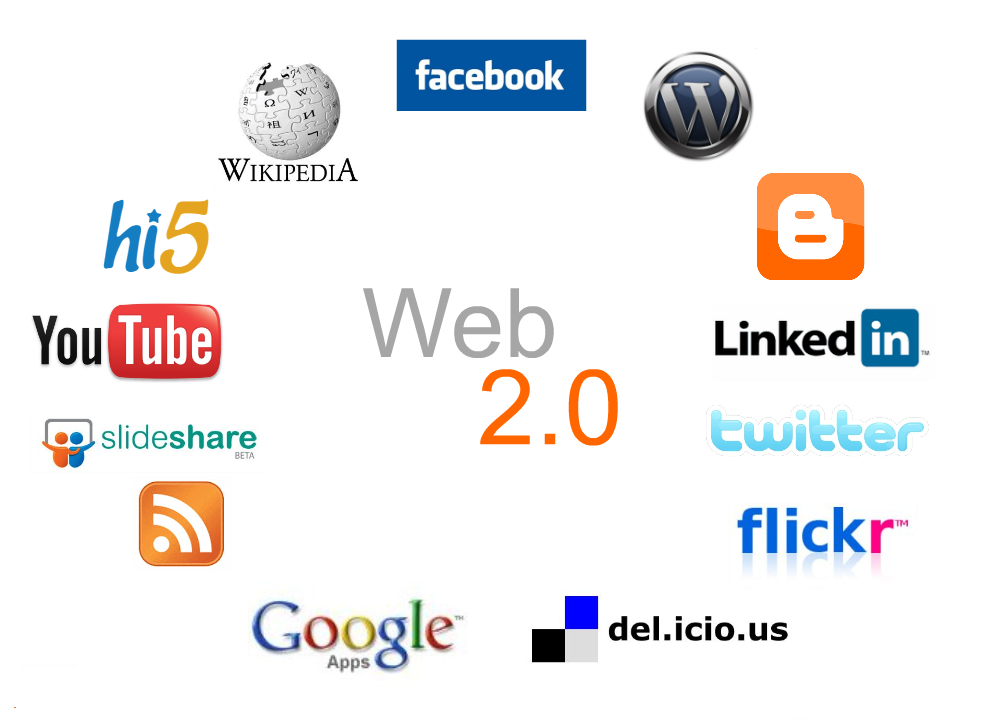
- The second stage in World Wide Web
:max_bytes(150000):strip_icc()/web-20.asp-FINAL-353224fb03fe4f0bafcd0bf28486cc80.png)
- Dynamic Website
- The content of the website changes
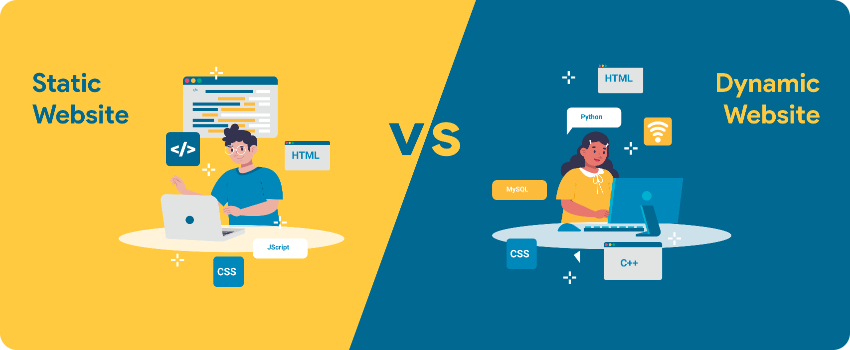

- Interactive
- The user may be able to comment or create user account
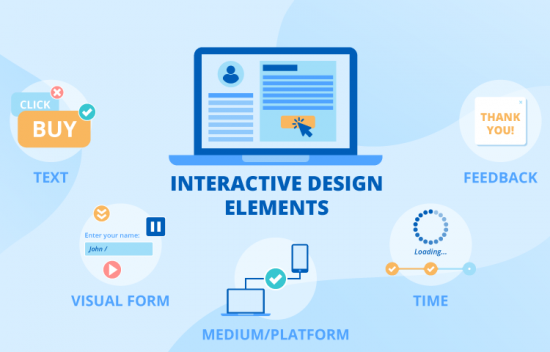
- Enables an increased user participation in the web

- Darcy DiNucci, an information architecture consultant, coined the term Web 2.0 in her 1999 article, “Fragmented Future”.
- The term was popularized by Tim O'Reilly and Dale Dougherty at the O'Reilly Media Web 2.0 Conference in late 2004 (TechTarget, 2015).
Features of Web 2.0
- Folksonomy - It allows users to categorize and classify/arrange information using freely chosen keywords (e.g., tagging). Popular social networking sites such as Twitter, Instagram, Facebook, etc. use tags that start with the pound sign (#). This is also referred to as hashtag.
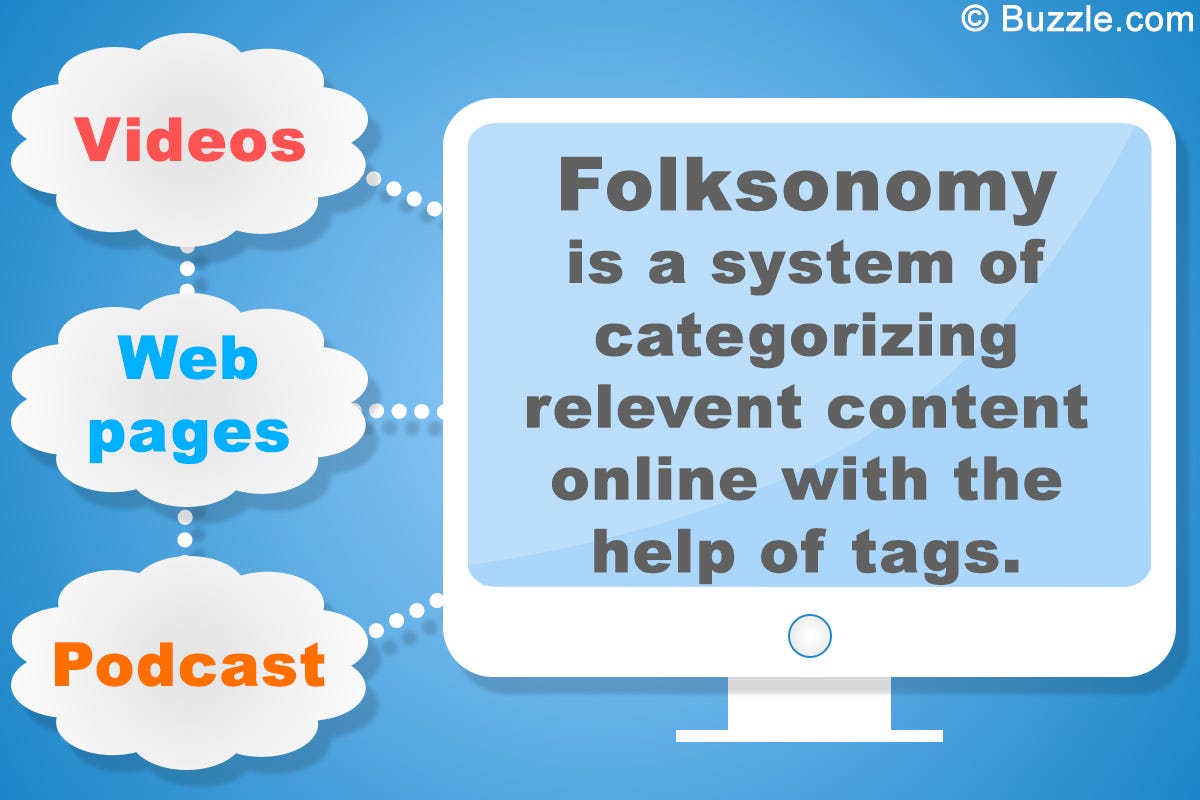
- Rich User Experience - Content is dynamic and is responsive to user’s input. An example would be a website that shows local content. In the case of social networking sites, when logged on, your account is used to modify what you see in their website.


- User Participation - The owner of the website is not the only one who is able to put content. Others are able to place a content of their own by means of comment, reviews, and evaluation. Some websites allow readers to comment on an article, participate in a poll, or review a specific product (e.g., Amazon.com, online stores).
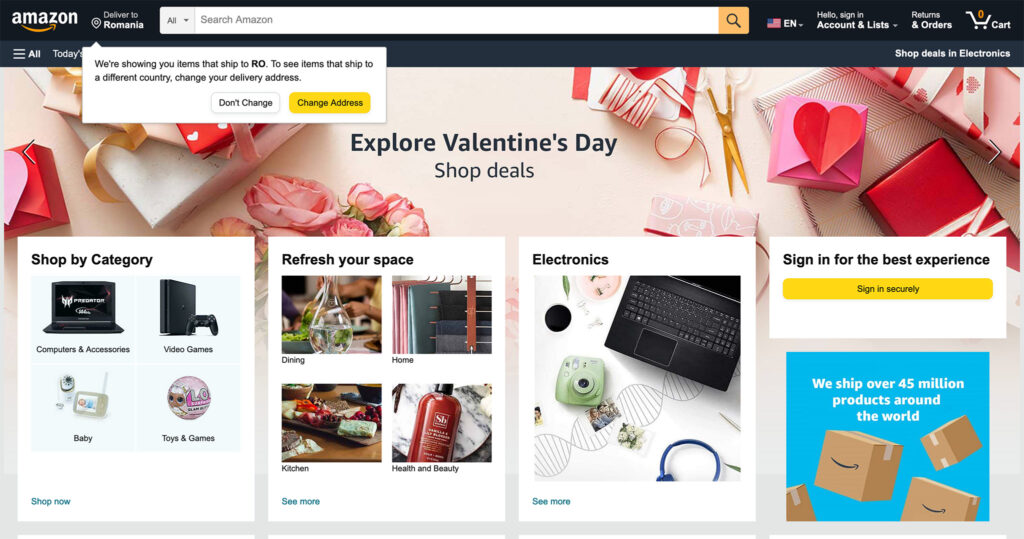
- Software as a Service - Users will subscribe to a software only when needed rather than purchasing them. This is a cheaper option if you do not always need to use a software. For instance, Google Docs is a free web-based application that allows the user to create and edit word processing and spreadsheet documents online. When you need a software, like a Word Processor, you can purchase it for a one-time huge amount and install it in your computer and it is yours forever. Software as a service allows you to “rent” a software for a minimal fee.
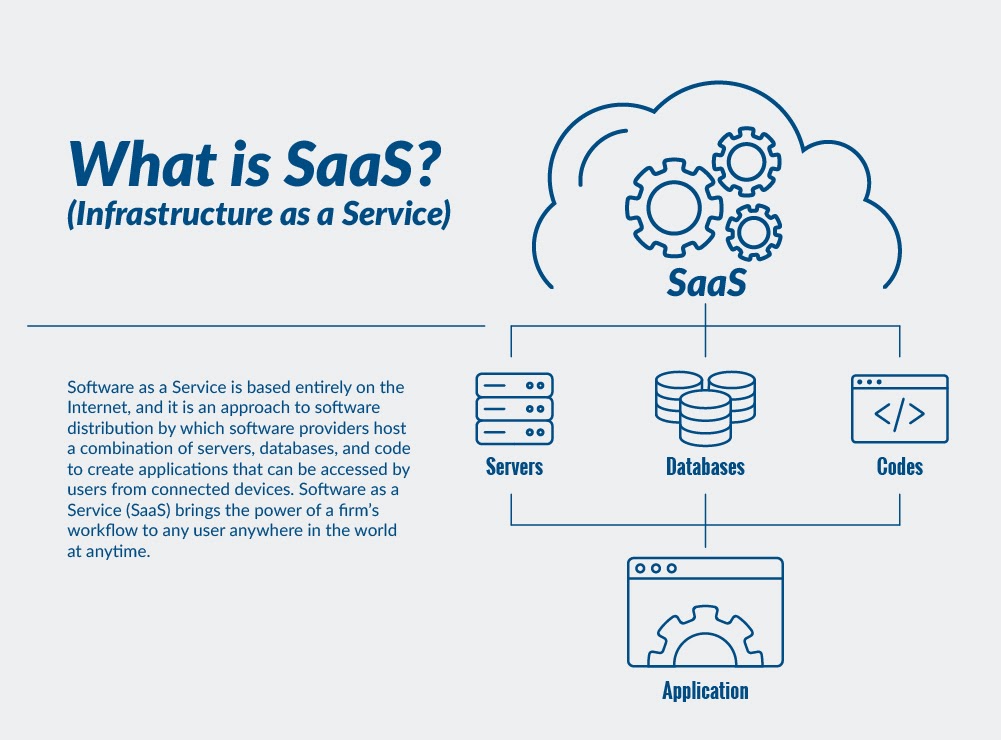
- Mass Participation - It is a diverse information sharing through universal web access. Since most users can use the Internet, Web 2.0’s content is based on people from various cultures.
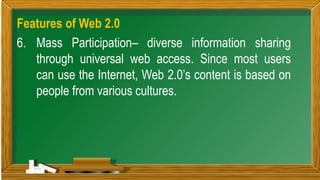
Web 3.0
![Difference between Web 1.0, Web 2.0, and Web 3.0 [1] | Download Scientific Diagram](https://www.researchgate.net/publication/367082704/figure/fig3/AS:11431281112821698@1673570287099/Difference-between-Web-10-Web-20-and-Web-30-1.png)
- also called as Semantic Web
- Semantics – ability of Web technologies to understand and interpret human generated content
- The aim of Web 3.0 is to have machines understand the user’s preferences to be able to deliver web content specifically targeting the user.
- The Internet is able to predict the best possible answers to your question by “learning from your previous choices
Trends in ICT
As the world of ICT continues to grow, the industry has focused on several innovations. These innovations cater to the needs of the people that benefit most out of ICT. Whether it is for business or personal use, these trends are current front runners in the innovation of ICT.
I. Convergence
-
- Technological convergence is the combination of two or more different entities of technologies to create a new single device.
Example: Using of smartphone to create word documents that was previously can only be created using desktop computer.

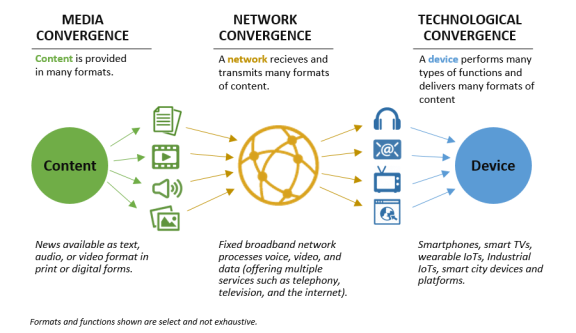
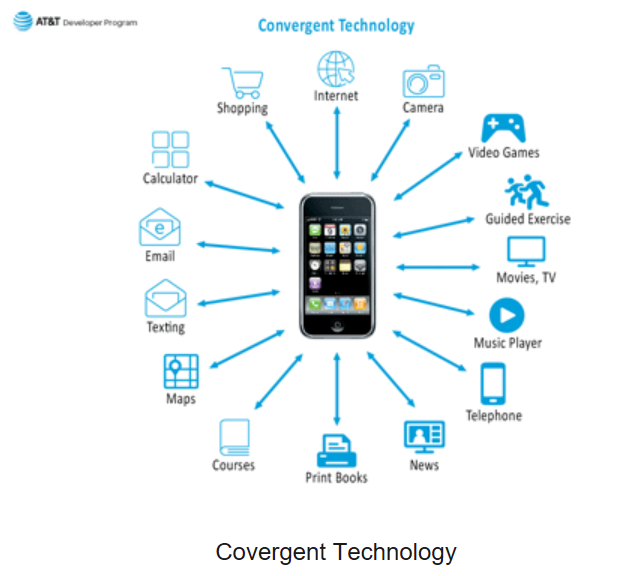
. Social Media
-
- It is a website, application, or online channel that enables web users to create, co-create, modify, and exchange user-generated content.
Types of Social media:
1. Social Networks - sites that allow you to connect with other people with same interests or background.
Examples: Facebook, Google+
2. Bookmarking Sites - sites that allow users you to store and manage links to various websites and resources, and to tag
Examples: StumbleUpon, Pinterest
3. Social News - sites that allow users to post their own news items or links to other news sources.
Examples: reddit, dig
![]()
4. Media Sharing - sites that allow you to upload and share media content like images, music, and video.
Examples: Flickr, YouTube, and Instagram
5. Microblogging - sites that focus on short updates from the user. Those who are subscribed will receive updates.
Examples: Twitter Plurk

6. Blogs and Forums - sites that allow users to post their content.
Examples: Blogger, WordPress, Tumblr
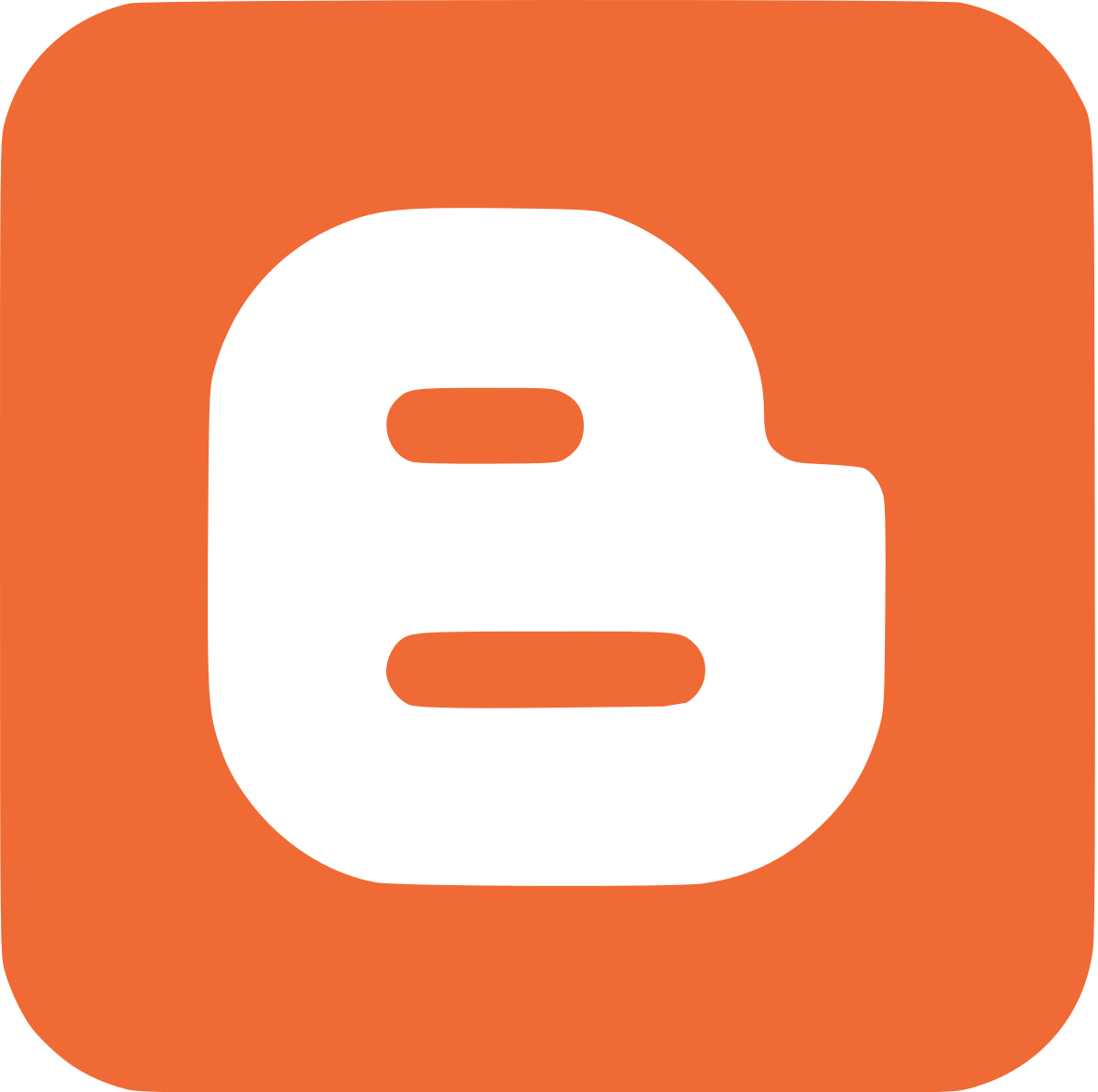
III. Mobile Technologies
-
- The popularity of smartphones and tablets has taken a major rise over the years. This is largely because of the devices’ capability to do tasks that were originally found in personal computers.
Different types of mobile operating systems:
1. iOS – used in Apple devices such as the iPhone and iPad

2. Android – an open source operating system developed by Google. Being open source means several mobile phone companies use this OS for free.

3. Blackberry OS – used in blackberry devices

4. Windows Phone OS – a closed source and proprietary operating system developed by Microsoft

5. Symbian – the original smartphone OS used by Nokia devices

6. WebOS – originally used for smartphones; now used for smartTVs

7. Windows Mobile – developed by Microsoft for smartphones and pocket PCs.
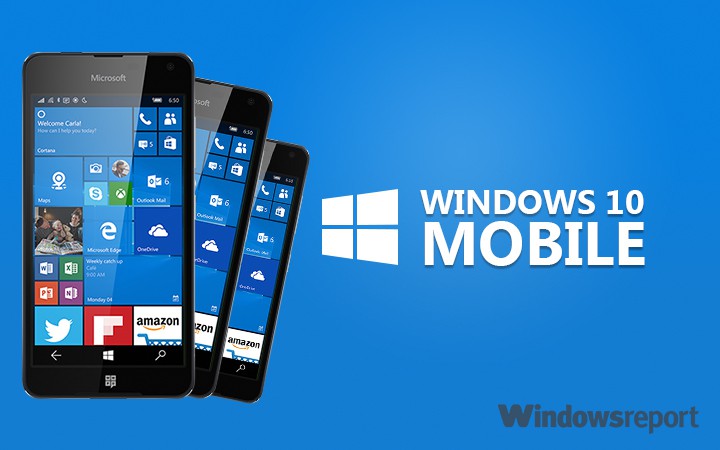
IV. Assistive Media
-
- It is a nonprofit service designed to help people who have visual and reading impairments. A database of audio recordings is used to read to the user.
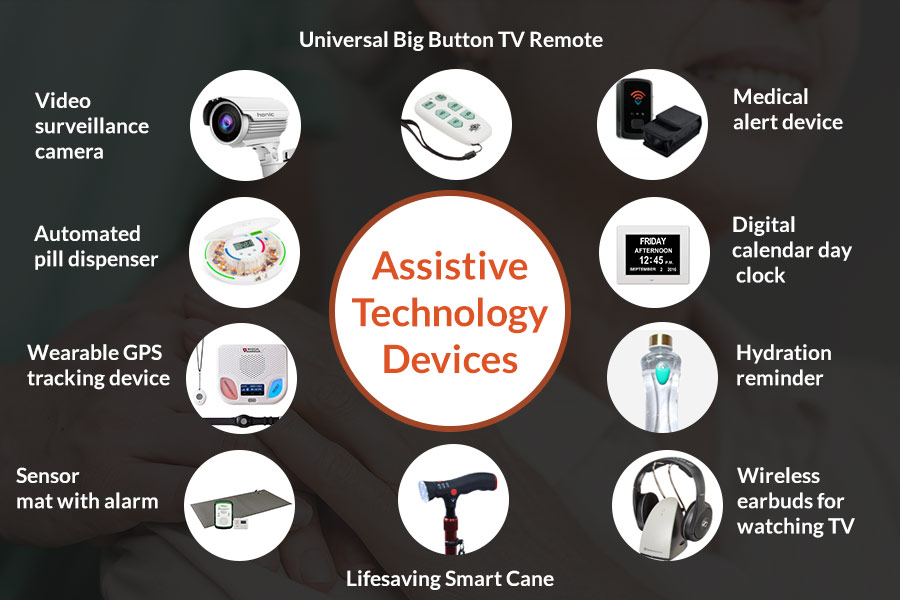

This research focuses on the identification of the Different Designs and Meanings of Gabey with their meanings according to the community of Poblacion, Tadian, Mountain Province.
In this research you can view the different parts of the research and these are as follows:
- Cover page
- Table of Contents
- Chapter 1- Introduction
- Chapter 2- Methodology
- Chapter 3- Results and Discussion
- Chapter 4- Conclusion and Recommendations
- Literature Cited- contains the resources and links that was used as basis in the research
Moreover, this study seeks to learn about the specific usage of the Different Designs and Meanings of Gabey in Poblacion, Tadian, Mountain Province.
This study will be conducted in May to June 2022 at Poblacion, Tadian Mountain Province. This research conducted during Grade 11 (2nd semester).
In my autobiography, you can read about me/myself.
-
Very slow access to the question bank: Disabling "question statistics" in Manage question bank plugins removes the slowness probleM
-
Minimal Profile and New Account pages using JavaScript
Here is a list of standard Moodle profile field IDs that you might want to hide:
- Email display: fitem_id_maildisplay
- MoodleNet Profile: fitem_id_moodlenetprofile
- City: fitem_id_city
- Country: fitem_id_country
- Timezone: fitem_id_timezone
- Description: fitem_id_description
- First name – phonetic: fitem_id_firstnamephonetic
- Last name – phonetic: fitem_id_lastnamephonetic
- Middle name: fitem_id_middlename
- Alternate name: fitem_id_alternatename
- ID number: fitem_id_idnumber
- Institution: fitem_id_institution
- Department: fitem_id_department
- Phone: fitem_id_phone
- Mobile phone: fitem_id_phone2
- Address: fitem_id_address
-
To install the code, navigate to Site Administration > Appearance > Additional HTML and add the following lines of JavaScript into the Before Body is Closed field:
-
<script>
document.getElementById('fitem_id_moodlenetprofile').remove();
document.getElementById('fitem_id_timezone').remove();
document.getElementById('id_moodle_additional_names').remove();
document.getElementById('id_moodle_interests').remove();
document.getElementById('id_moodle_optional').remove();
</script>






















